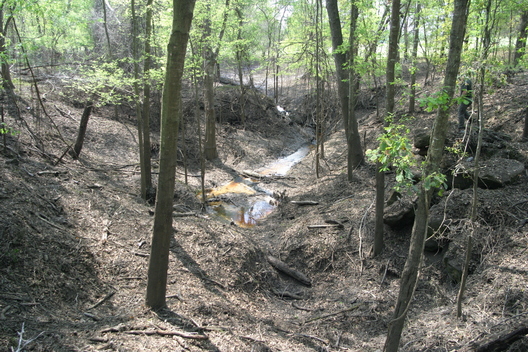MEDIA ADVISORY: Feb. 29, 2012
DEP’S FLORIDA GEOLOGICAL SURVEY CONDUCTS NORTH FLORIDA WATERS DYE STUDY
~Test needed to confirm groundwater flow patterns~
 Trees provide shade to Bird Sink.
TALLAHASSEE – The Florida Department of Environmental Protection’s (DEP) Florida Geological Survey (FGS) is conducting a dye study in Wakulla and Spring Creek to investigate possible sources of nutrients in the spring systems as part of a long-term groundwater flow study in the region.
The FGS injected the dye, called uranine, in Bird Sink on Feb. 22, 2012. This is a sinking stream or “swallet” located in Leon County at I-10 and State Road 59, near the town of Lloyd. The dye will be transported with currents on an outgoing tide and will be tracked throughout the springs system by FGS staff.
The objective of the dye study is to assess hydrologic conditions within Wakulla and Spring Creek system. The movement of dyed water will provide scientists and resource managers with information on how water flows within the springs system.
The injected dye is a harmless, Environmental Protection Agency (EPA) approved organic solution similar to food coloring agents used in cooking. The dye will eventually degrade by natural processes. It is possible that some of the dye, which is bright green, may appear in surface water features like springs, river runs, sinkholes and in rare occasions, private wells. Local governments have been advised about the dye study. The dye poses no risk to human health or the environment.
|